
La Earthcache / The Earthcache
Des pierres marbrières sont souvent utilisées comme habillement des façades ou des sols sur du mobilier urbain.
Et la Gare de Nantes n'y fait pas exception avec un pavement de beau "marbre vert".
Mais ce qui semble être un marbre véritable, c'est à dire d'un point de vue géologique un calcaire ayant subit un métamorphisme, n'en est pas un.
Ce "marbre vert" est en réalité une roche sédimentaire détritique hybride, l'ophicalcite.
► Formation de l'ophicalcite
L'ophicalcite (contraction d'ophiolite et calcite) est une roche hybride formée dans des conditions particulières au cœur de la croûte océanique entre des formations de serpentinites et gabbros en dessous, et d'autres de basaltes et sédiments océaniques au dessus.

Cette roche s'est formée par fracturation des serpentinites dues à une surpression de fluides hydrothermaux riches en carbonate de calcium (CaCO3).
Ces fluides sous pression favorisent l'éclatement de la roche, permettant la mise en place de filons dans cet encaissant basique fragmenté.
Ces fluides ayant traversés des couches sédimentaires calciques constituant la partie sommitale des fonds marins, ils vont permettre une injection de carbonate de calcium qui va se cristalliser en une matrice calcitique.
► Nature et caractéristiques
L'ophicalcite est par définition une roche sédimentaire conglomératique formée de blocs pluri-centimétriques fragmentées de serpentinite.
Selon la forme des blocs, il est possible de distinguer deux familles de roche conglomératique :
- les brèches, composées de gros blocs anguleux.
- les poudingues, composés de galets aux formes arrondies.
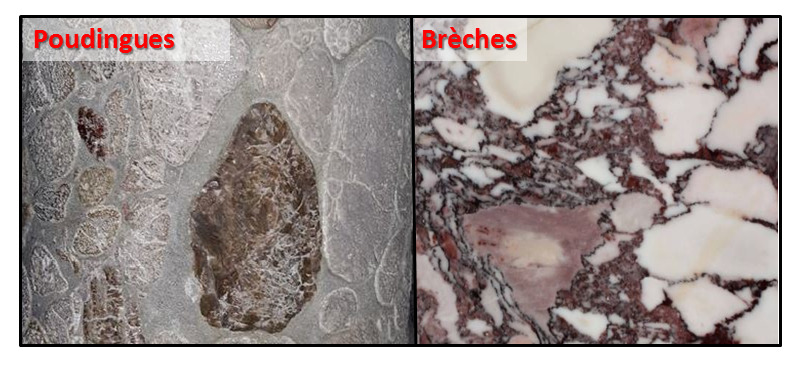
~ Des clastes de croûtes océaniques basiques
Les blocs de cette roche détritique sont de la serpentinite, un minéral issu de l'altération par hydrolyse de la péridotite, substrat de la croûte océanique.
Cette roche basique est une formation métamorphique constituée en grande partie de serpentine (nom générique recouvrant plusieurs espèces minérales).
Elle doit son nom à son aspect semblable à celui d'écailles et à une sensation particulière au toucher évoquant la peau d'un serpent.
C'est une roche verdâtre (voire vert sombre) surtout constituée d'antigorite, un phyllosilicate magnésien issu de la transformation des minéraux d'olivine et de pyroxène.
Sa coloration est principalement due à cette forte teneur en antigorite.

~ Une matrice carbonatée
Les espaces formées par la fragmentation de la roche basique vont être remplis de calcite, du Carbonate de Calcium (CaCo3).
Il s'agit d'une matrice entièrement cristalline, les cristaux de calcite étant de dimensions millimétriques à centimétriques.
La couleur blanche est caractéristique d'une roche primaire de carbonate de calcium pur, sans impureté.
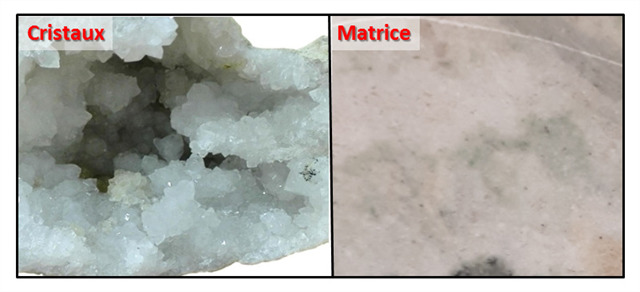
Des minéraux détritiques ou des oxydes minéraux présents dans l'environnement peuvent ensuite donner à la calcite diverses colorations.
- La couleur rose provient d'une teneur importante en hématite, minéral très riche en fer.
- La couleur violette "améthyste" provient de traces de fer.
- La couleur vert provient de l'antigorite de la Serpentine.
- La couleur bleue provient d'une présence de cobalt.
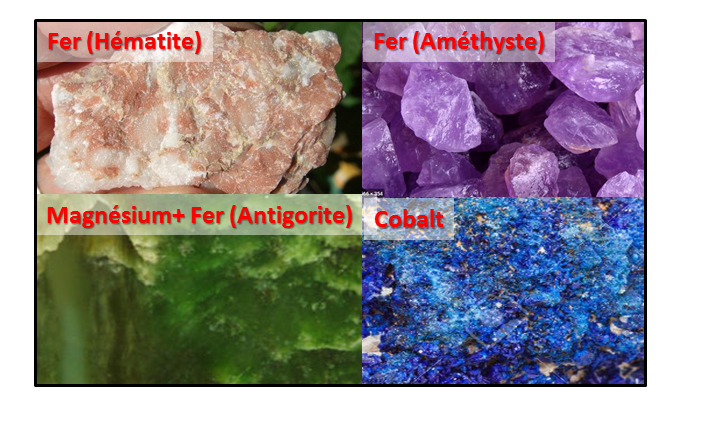
Marble stones are often used as clothing for facades or floors on street furniture.
And the Nantes train station is no exception with a beautiful "green marble" pavement.
But what appears to be real marble, ie from a geological point of view a limestone that has undergone metamorphism, is not.
This "green marble" is actually a hybrid detrital sedimentary rock, ophicalcite.
► Formation of ophicalcite
The ophicalcite (contraction of ophiolite and calcite) is a hybrid rock formed under particular conditions in the heart of the oceanic crust between formations of serpentinites and gabbros below, and others of basalts and oceanic sediments above.
This rock was formed by fracturing of serpentinites due to an overpressure of hydrothermal fluids rich in calcium carbonate (CaCO3).
These pressurized fluids promote the shattering of the rock, allowing the establishment of veins in this fragmented basic host.
These fluids having crossed calcic sedimentary layers constituting the top part of the seabed, they will allow an injection of calcium carbonate which will crystallize in a calcitic matrix.
► Nature and characteristics
Ophicalcite is by definition a conglomerate sedimentary rock formed by fragmented multi-centimeter blocks of serpentinite.
Depending on the shape of the blocks, it is possible to distinguish two families of conglomerate rock:
- the breaches, made up of large angular blocks.
- pudding, composed of pebbles with rounded shapes.
~ Basic oceanic crust clasts
The blocks of this detrital rock are serpentinite, a mineral resulting from the alteration by hydrolysis of peridotite, the substrate of the oceanic crust.
This basic rock is a metamorphic formation made up largely of serpentine (generic name covering several mineral species).
It owes its name to its scale-like appearance and a special sensation to the touch that evokes the skin of a snake.
It is a greenish rock (even dark green) mainly made up of antigorite, a magnesian phyllosilicate resulting from the transformation of the minerals of olivine and pyroxene.
Its coloring is mainly due to this high content of antigorite.
~ A carbonate matrix
The spaces formed by the fragmentation of the basic rock will be filled with calcite, Calcium Carbonate (CaCo3).
It is a fully crystalline matrix, the calcite crystals being millimeter to centimeter in size.
The white color is characteristic of a primary rock of pure calcium carbonate, without impurities.
Detrital minerals or mineral oxides present in the environment can then give the calcite various colors.
- The pink color comes from a high content of hematite, a mineral very rich in iron.
- The violet color "amethyst" comes from traces of iron.
- The green color comes from the Serpentine antigorite.
- The blue color comes from the presence of cobalt.
► Sources bibliographiques / Bibliographical sources
Les Questions / The Questions
La lecture attentive du descriptif de la cache, ainsi qu'une observation des éléments de terrain et un peu de déduction sont normalement suffisants pour répondre aux questions de cette EarthCache.
A careful reading of the description of the cache, as well as observation of terrain features and some deduction is usually sufficient to answer questions of this EarthCache.
Questions pour valider :"Le 'Marbre Vert' de la Gare de Nantes"
Questions to validate: "The "Green Marble" of Nantes train station"
Vous voici devant une des entrées de la Gare Nord de Nantes ; repérez la zone rouge de la photo "WP1_Large" ou vont se trouver les zones à observer.
Here you are in front of the entrance to the Gare Nord de Nantes; locate the red zone of the photo "WP1_Large" where the two zones to observe will be found.
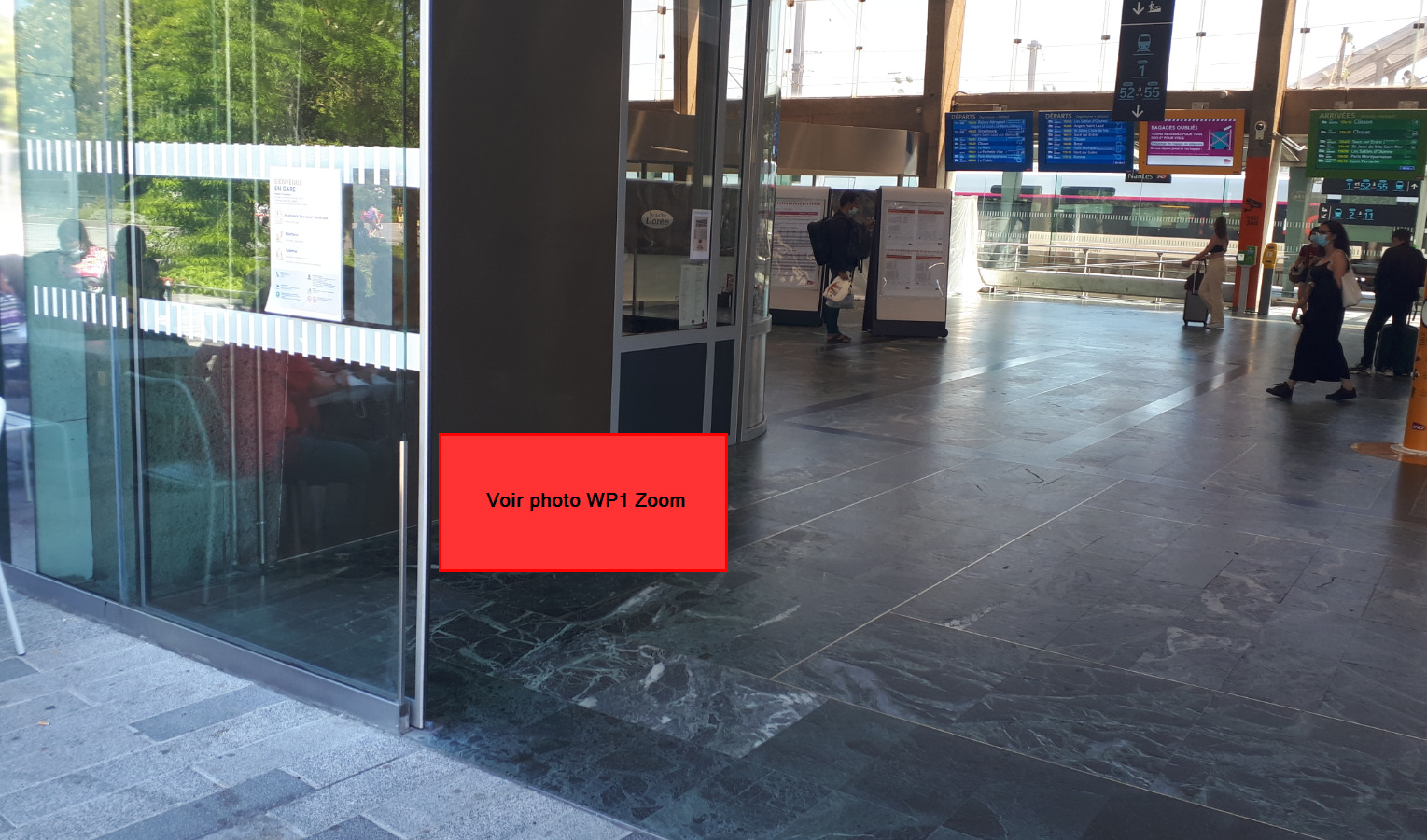
- Question 0 : Prenez une photo de vous ou d'un élément vous identifiant devant la gare.
Cette photo devra au choix nous être transmise avec les réponses ou être ajoutée à votre log.
- Question 0 : Take a photo of yourself or something that identifies you in front of the station.
This photo will have to be sent to us with the answers or to be added to your log.
Vous voici au niveau de la zone rouge dans le hall de la Gare, devant les zones A, B, C1 et C2 (photo WP1_zoom_2023).
Here you are at the level of the red zone in the hall of the station, in front of zones A, B, C1 and C2 (photo WP1_zoom_2023).
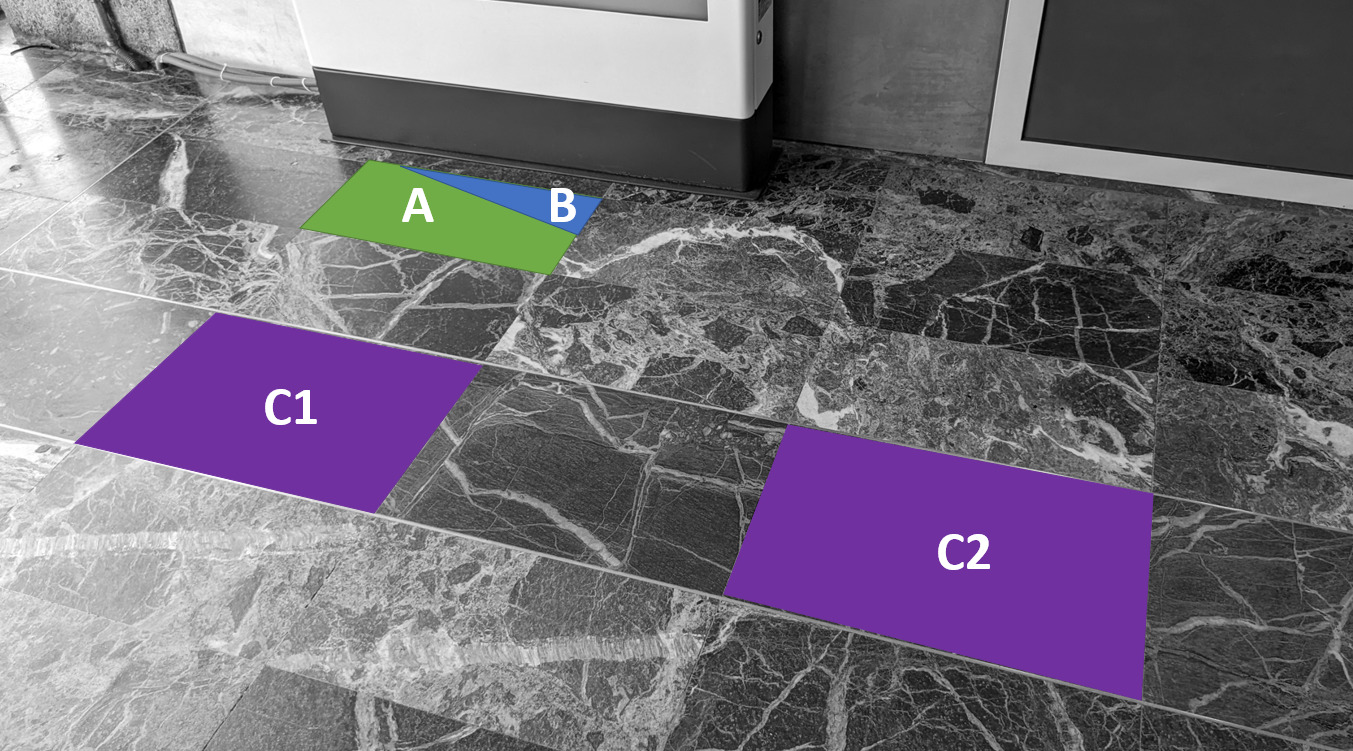
- Question 1 : Décrivez la zone A verte. Quelle est sa nature dans la structure mixte de l'ophicalcite ?
- Question 1 : Describe the green A zone. What is its nature in the mixed structure of ophicalcite?
- Question 2 : Décrivez la zone B bleue. Quelle est sa nature dans la structure mixte de l'ophicalcite ?
- Question 2 : Describe the blue B zone. What is its nature in the mixed structure of ophicalcite?
- Question 3 : Décrivez les plus gros blocs (taille, forme) des blocs violets C1 et C2, puis déduisez-en la nature des blocs de ce conglomérat.
- Question 3 : Describe the largest blocks (size, shape) of the purple blocks C1 and C2, then deduce the nature of the blocks of this conglomerate.
Vous pouvez vous loguer sans attendre notre confirmation,
mais vous devez nous envoyer les réponses en même temps soit par mail via notre profil (
fafahakkai), soit via la messagerie geocaching.com (Message Center).
S'il y a des problèmes avec vos réponses nous vous en ferons part.
Les logs enregistrés sans réponses et sans photo seront supprimés.
You can log this cache without waiting for our confirmation, but you must send us the answers at the same time, by e-mail via our profile (fafahakkai) or by the system of Message Center of geocaching.com.
If there is a problem with your answers we will notify you. The logs recorded without answers and photo will be deleted.
Rappel concernant les « Earthcaches »: Il n'y a pas de conteneur à rechercher ni de logbook à renseigner. Il suffit de se rendre sur les lieux, de répondre aux questions ci-dessus et de nous renvoyer les réponses.
Reminder concerning "Earthcaches": there is neither a container to look for nor a logbook to sign. One need only go to the location, answer to the differents questions and send us the answers.